Address newsletter
Get the latest news on buying, selling, renting, home design, and more.

Author Sheri Koones is a recognized authority on home construction, an award-winning author, and a frequent speaker. She has written 11 books on sustainable building, including “Bigger Than Tiny,” “Smaller Than Average,” and “Prefabulous for Everyone.” This is an excerpt from her latest book, “ADUs: The Perfect Housing Solution.”
Mystic, Conn.
Designer/manufacturer Unity Homes
Size 790 square feet

Richard and Ellen were living in the Hudson Valley, renting out their Mystic house on a short-term basis and using the house themselves on occasion. Eventually they began to think about consolidating: building an accessory dwelling unit on the Mystic property to live in full time and continuing to rent out the main house. The ongoing rental income from the main house would make it possible for them to build the ADU. The main house would also allow them to host friends and family when it is not rented, effectively increasing their square footage when it was needed.
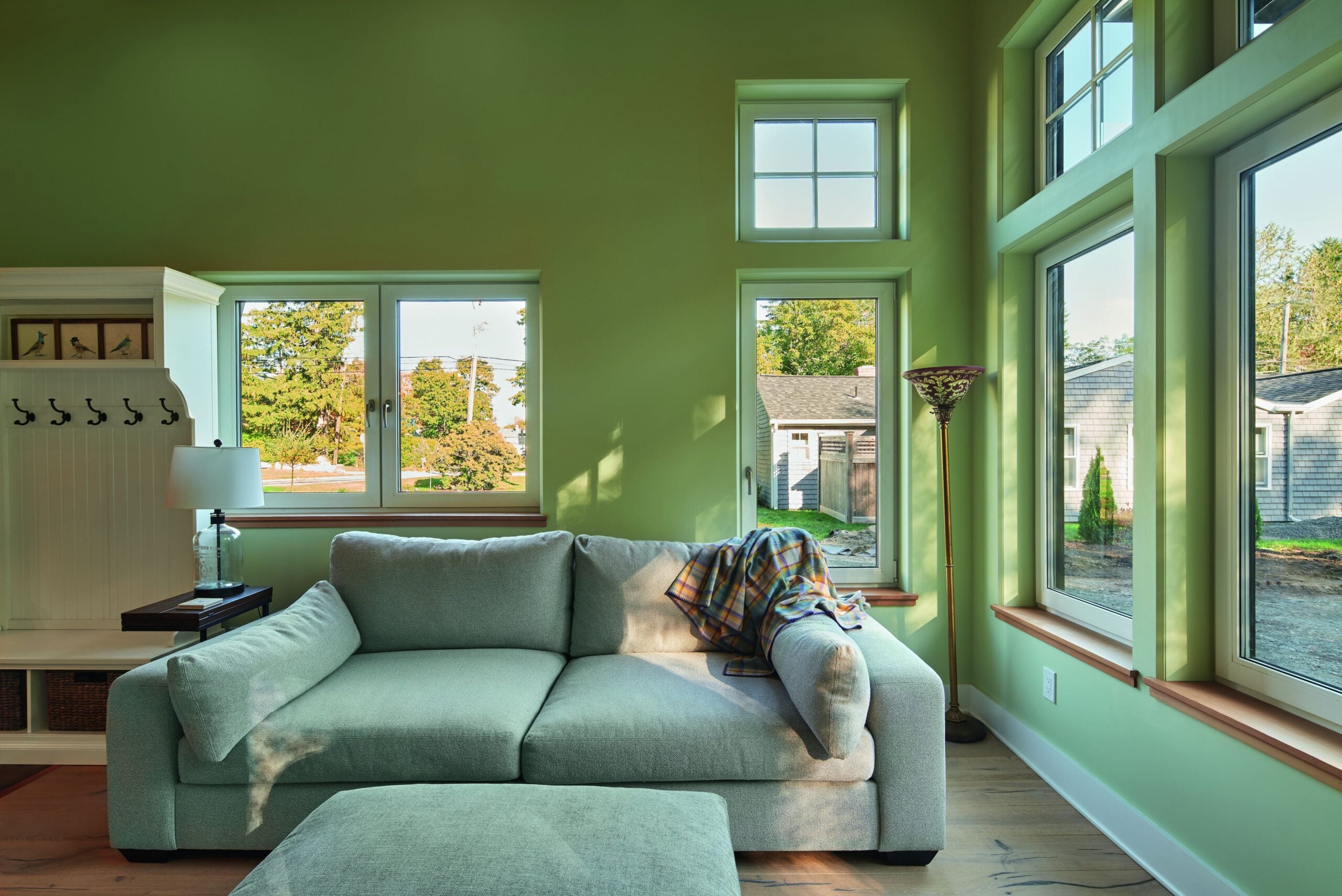
The couple began looking for builders who had small house designs who could build a net-zero ADU, which they wanted for its comfort and energy efficiency. They fell in love with the Zum design by Unity Homes and decided that was what they wanted to build. However, the Zum was a full-size house and would not meet the ADU 800-square-foot size limitations. Unity designers worked with the couple to customize the plan to meet their zoning and personal requirements. The couple was delighted with what became the Zumette, which met all their design and efficiency requirements.
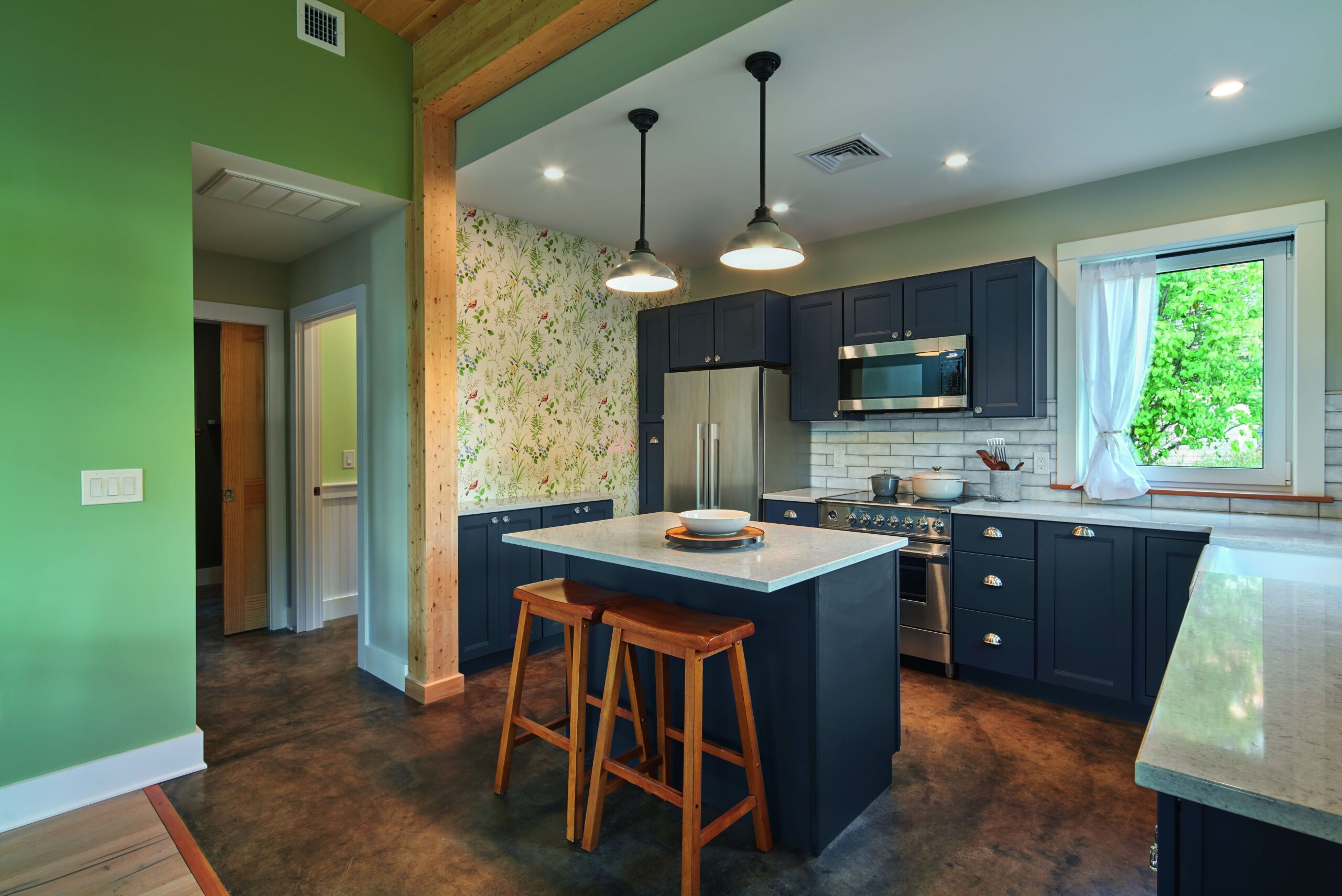
While working on this new design, Unity decided to explore the use of some new materials and methods, teaming up with CertainTeed, a manufacturer of multiple construction products. The ADU was built using some materials that are nonstandard for Unity but are common in mainstream construction. For example, in their prefabricated panels, Unity used CertainTeed’s blown Fiberglas insulation instead of their usual cellulose. The owners were happy to have Unity do research and development with new products that would bring excellent energy use and comfort to their new ADU.
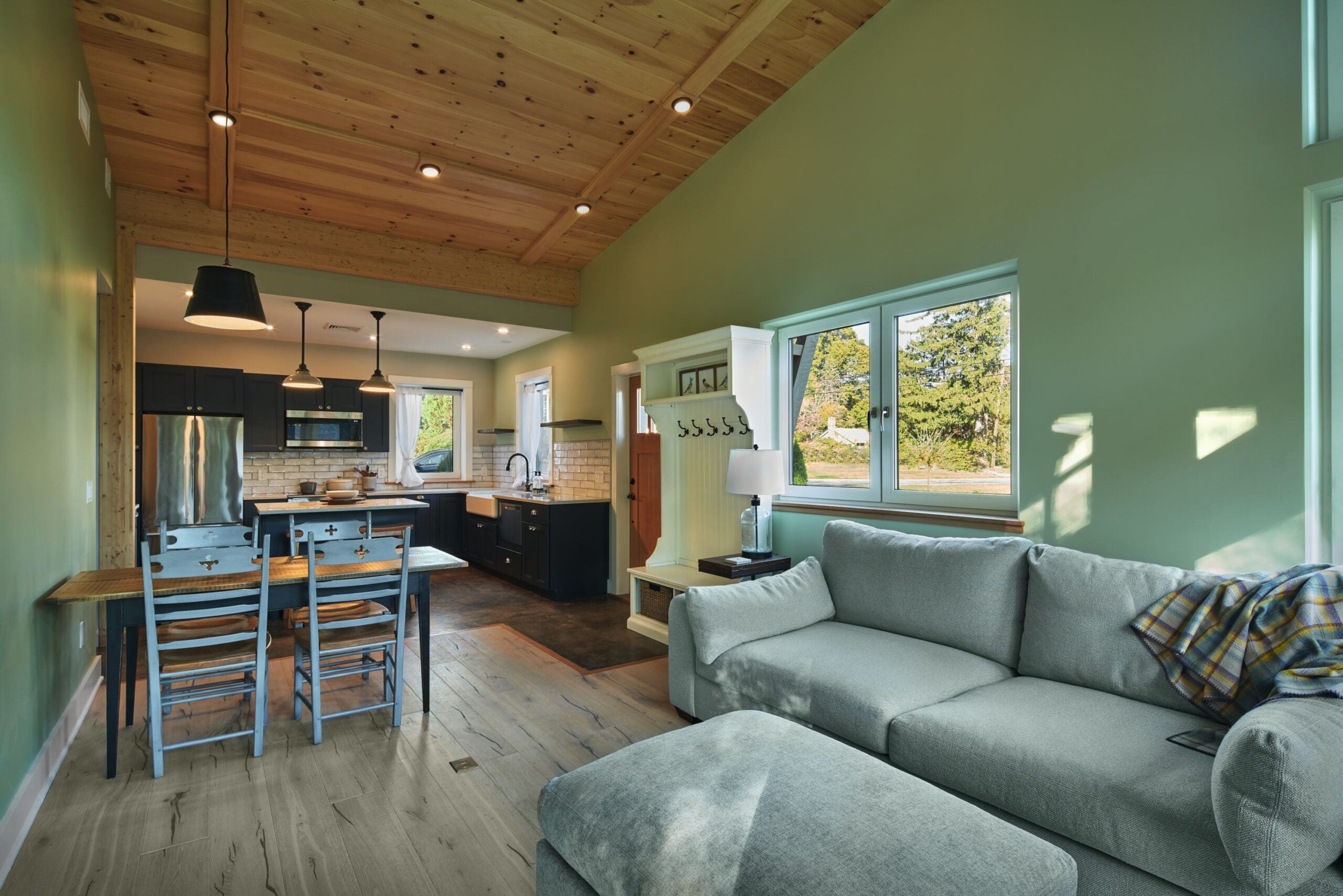
Sensors were installed throughout the structure to collect information on temperature, humidity, energy use, volatile organic compounds (VOC), and carbon dioxide emissions. According to project manager Beth Campbell, “The home is performing as modeled, which proves the credibility of the research and development assembly and materials that were used by Unity and CertainTeed teams.” The data collected will be used to further improve the way that Unity Homes builds in the future. Because the roof pitch direction on their Zumette is not optimal for solar panels, the couple plans to install a photovoltaic array on the existing garage that has a south-facing roof. They understand that their actual electrical use will depend on variables such as plug loads and HVAC settings, but they’re expecting their PV system to produce sufficient power to serve the needs of their all-electric home. The ADU has triple-pane windows to help maintain indoor temperature and an air-source heat pump, which is more energy efficient than a typical forced hot air system. A blower door test was performed to find any leaks in the envelope of the ADU and patch them up. Because the ADU was built very tight, a heat recovery ventilator was installed to continuously exchange the stale interior air with the outside air, while not losing the heat or cool air already created in the ADU.
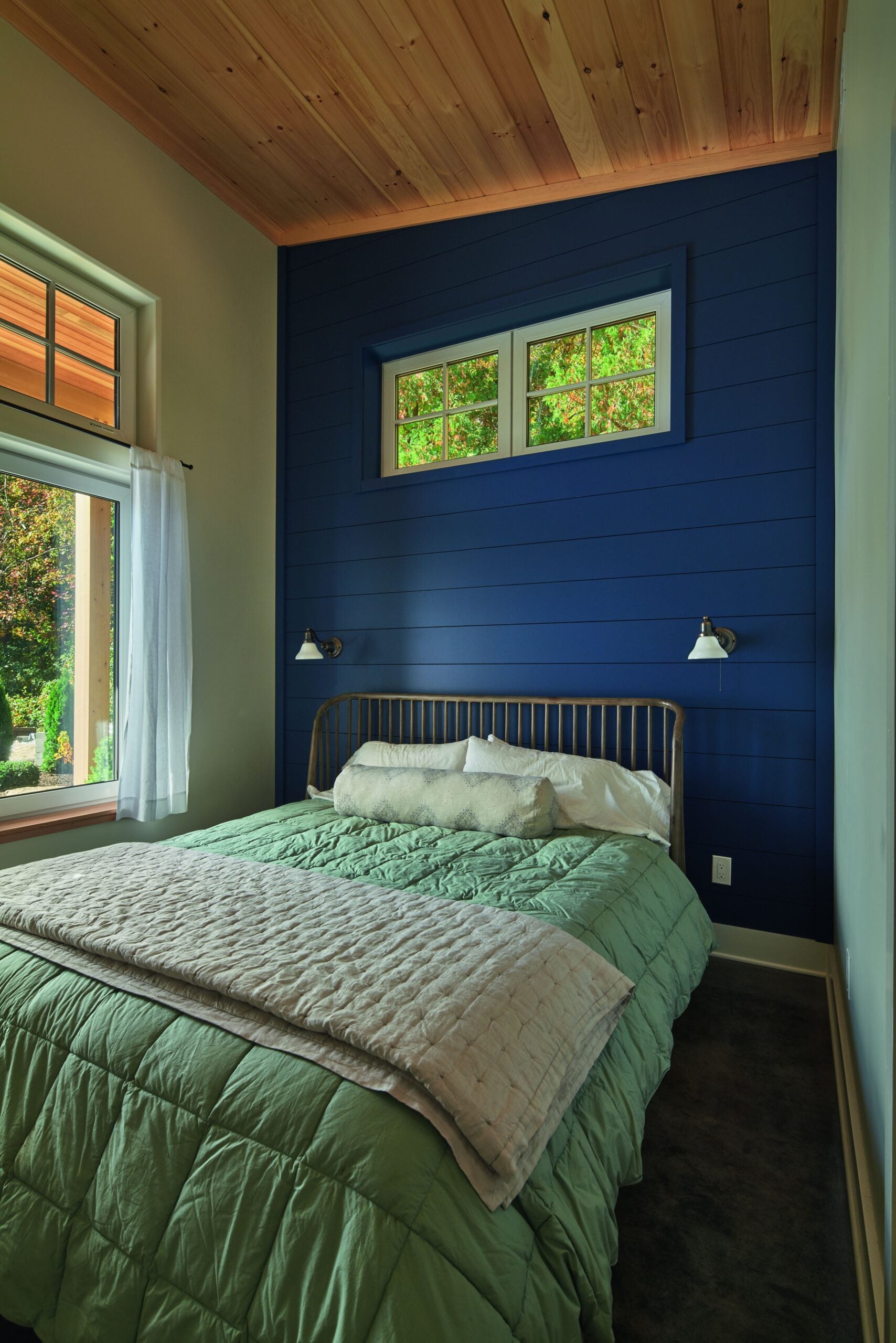
Richard and Ellen selected a package offered by Unity Homes that included a high-performance shell and a selection of finishes and fixtures. They opted to use Unity’s standard offerings for engineered flooring, kitchen cabinets, plumbing fixtures, and siding, appreciating that they didn’t have to go through the extensive research required to specify all the fixtures and finishes for their ADU. The couple was able to keep costs down by utilizing a slab-on-grade foundation, building the ADU on a flat site that didn’t require extensive excavation work, and choosing finishes that were beautiful but moderately priced.
Because the panels were prefabricated in the factory, the entire shell of this ADU was assembled in just a few snowy days. Richard and Ellen hired a local general contractor to prepare the site and install the insulated slab foundation. After the Unity crew assembled the shell on-site, the contractor completed the home during the following months. To create a distinct outdoor living area in the backyard, which is separate from the vacation rental on the same lot, the clients hired a landscaper to transform the yard into a private space with a concrete patio, walkways, and native plants. When the ADU was complete, Richard and Ellen were very pleased with the results, including the craftsmanship of the structure. Unity now offers the Zumette model as part of their Express or ready-to-build plans.
• Heat recovery ventilator
• All electric — no gas coming into the ADU
• Induction stove
• Quartz countertops
• Air-source heat pump
• Solar panel ready
• Triple-pane windows
• Large overhangs
• Insulation exceeding code requirements
• Optimal orientation for solar gain in winter
An accessory dwelling unit is a secondary home on the property of a main house that has its own entrance and contains, minimally, a bathroom, a kitchen or kitchenette, and a sleeping area. It can be a separate unit, or it can be built in place of an existing garage, built over a garage, or attached to the primary home as an addition or basement apartment. An ADU is referred to by several names — granny-flat, detached accessory dwelling unit (DADU), in-law suite, casita, laneway house, and more. There is also a Junior ADU or JADU, which is located within the floor area of an original single-family house. An ADU is considered part of the main residence, and, in most cases, it must be sold with that residence, although some municipalities are trying to change that regulation. As of this writing, there are currently about 1.5 million ADUs in the United States, and that number is growing at a rate of about 9 percent per year.
It is difficult to cite a universal price for an ADU because of the many factors that go into this calculation. The cost of building an ADU is dependent on its location, size, configuration, cost of materials, cost of permits, local labor costs, and the complexity of the unit. Other factors include whether it is part of the main house, a conversion from a garage, or a new detached structure. The size of the ADU will be dependent on local zoning laws as well as personal preference. On average ADUs are between 600 and 1,200 square feet, but there are exceptions to these figures, both larger and smaller. The most positive financial factor in building an ADU is that the land is free, which is often one of the costliest parts of any construction.
ADUs were initially spurred on in Canada by the shortage of housing and an economic crisis following World War II, where one of the earlier methods of building ADUs was in the laneways where garages once stood. ADUs are a more recent development in the United States, with more and more cities and municipalities permitting them over the last several years. The growth of ADUs in the United States is mainly due to the decline in the number of affordable homes and relaxed restrictions on the size and scope of these units.
Municipalities have their own regulations regarding ADUs: how many may be on the property, how big they can be, who can live in them, what style they may be, how many parking spaces are required on the property, and so on. ADUs must meet the local zoning laws — some more stringent than others.
In some areas the owner of the property or a family member must live in either the main house or the ADU. In other areas, such as Atlanta the owners do not have to live in either unit. Count on there being restrictions as to the size of the ADU, the setbacks, the height, the design, and so on in your area. As this book is going to print, there are many locations where local governments are still negotiating what regulations they will put in place for future units. Some areas still have not allowed ADUs at all. If you live in a homeowner’s association, be aware that they will also have their own restrictions and regulations, in addition to the local governments. Before anyone considers building an ADU, they must first check with the local municipality to make sure they can be built in the area and what the regulations are. Here are some additional questions people should ask:
• How big can the ADU be?
• Can more than one ADU be built on the property?
• How large do the setbacks have to be? What are the height and size restrictions?
• Is there a particular design the ADU must adhere to?
• Do owners have to occupy one of the units? Can one or both the main house and ADU be rented?
• Do the main residence and ADU need to have separate utilities, or can they share utilities?
• Is it necessary to provide a parking space for the ADU?
• Are there additional restrictions?
Sheri Koones has authored numerous articles for AOL Real Estate, Smart Homeowner, and Builder magazine, and is a regular contributor to Forbes.com. She lives in Greenwich, Conn. Get a copy of her latest book, “ADUs: The Perfect Housing Solution” wherever books are sold. Follow her on X @sherikoones.
Get the latest news on buying, selling, renting, home design, and more.
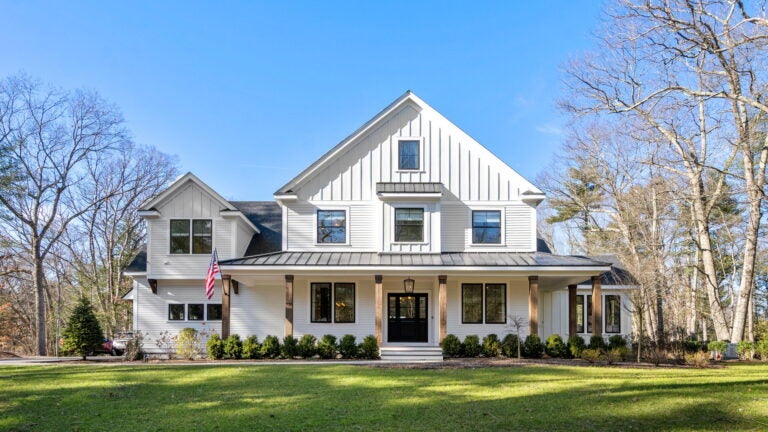
Stay up to date with everything Boston. Receive the latest news and breaking updates, straight from our newsroom to your inbox.
Conversation
This discussion has ended. Please join elsewhere on Boston.com